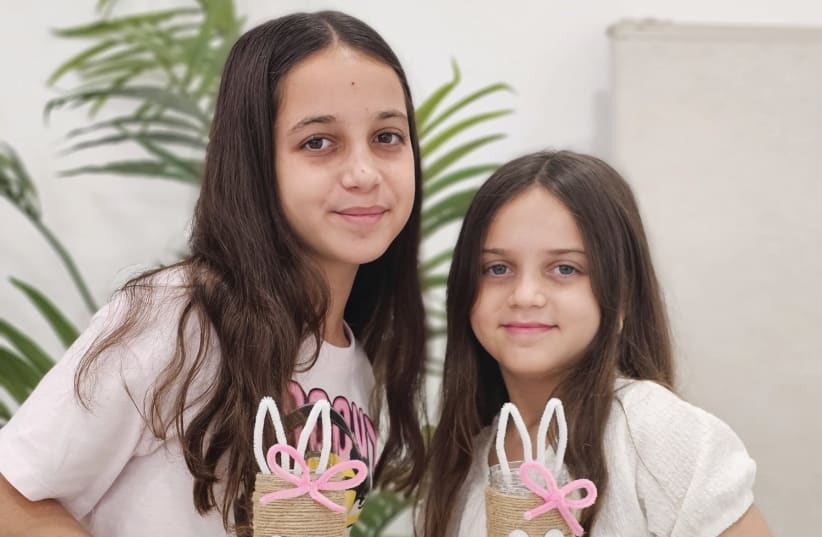Having started my career as a teacher, and then gone on to become a “teacher of teachers,” student mental health has always been at the forefront of my mind.
Since assuming my position at World ORT Kadima Mada just prior to the onset of COVID-19 and now with the war in Gaza and its ripple effects, it seems I was destined to work in a state of perpetual crisis management. But while the pandemic brought challenges of loneliness and social anxiety, the war has introduced more profound and pervasive trauma-related issues.
On October 7, our sense of security, as a nation, was shattered. Terrorist incursions suddenly felt dangerously close. We no longer feel safe in our own homes.
Children absorb unspoken messages from their parents and are far more vulnerable. In the first weeks of the war, a video circulated showing how to fashion an apparatus to lock the mamad (safe room) from the inside; it was national hysteria. Parents must realize that they pass on their own fear and anxiety to their children, who don’t have the emotional and cognitive tools to process it. Not surprisingly, my colleagues and I have been seeing children experiencing existential terror, refusing to exit the mamad for any length of time.
Social media is another factor that plays a major role in exacerbating the trauma, as from the first week of the war children were exposed to graphic content, dubbed “war porn.” It’s incumbent on parents and educators to take a more proactive approach in shielding children from triggering images and educating them about responsible media consumption.


1 in 20 students were in the 'first circle' of those affected on Oct 7
World ORT Kadima Mada runs the southern youth village of Kfar Silver, located some 8 km. from the Gaza border. Just days after the war broke out, Kfar Silver was evacuated and students were placed with relatives or in hotels and special evacuation centers for displaced residents.
Out of the more than 1,000 students at Kfar Silver, 56 are in the “first circle” of those affected, with people close to them who were murdered, wounded, or abducted. Significant numbers of staff are also in the first circle, having either experienced loss; or having loved ones serving on the front lines. Additionally, we have dozens of students from Ukraine who fled their homes just a year and a half ago, and they are now forced to uproot themselves once again.
In the first weeks of the war, my staff and I were focused on mental health “first aid.” We visited students in 44 evacuation centers throughout Israel, ensuring that they were getting the psychological support they needed, and offering our services as well. Some kids, for example, are eligible for intensive mental health intervention from the government but haven’t taken advantage of the opportunity, for various reasons. One of my biggest responsibilities at this time is making sure no child is left behind.
One of my students from the Gaza border kibbutz of Nir Am knew several people who were murdered and kidnapped. As he and his family were being evacuated on October 7, they witnessed horrific scenes, including bodies strewn on the ground. Since that day, we’ve been in regular contact. His teacher calls him daily, and he receives treatment and support from our educational psychologist and myself.
AS THE conflict wears on, a semblance of normalcy, or what we call “emergency routine” is emerging. Students are starting to return to Kfar Silver and attend in-person classes. Through classroom discussion, one-on-one talks, breathing exercises, mindfulness, and physical activity with an emphasis on self-defense, we’re seeing teens slowly processing what they’ve been through and regaining their sense of empowerment.
Therapeutic workshops, such as robotics and other DIY projects, where students can talk while they build, are also valuable means of getting kids to express themselves. It’s critical that they open up and talk about the events now, during the initial trauma stage, so that there aren’t problems down the line that can turn into post-trauma.
The long-term work is also the most challenging. After weeks of being out of school and away from their regular environment, some displaced youths have begun displaying at-risk behaviors. In Eilat, for example, they were taken to see the sights, to the beach – and that was great for a week or two. But how long can you be on vacation? The boredom, compounded by the trauma and stress, spawned secondary problems, such as vandalism and substance abuse.
Conversely, we have a group of older students who have found jobs. That’s a good thing, but not if it keeps them from returning to school because they want to continue working and earning.
As we progress through the emotionally turbulent period of watching the hostages return, I believe in both a bottom-up and a top-down approach. Not only students but staff, too, should be encouraged to avail themselves of the mental health services we offer. Those who are reluctant should be gently pushed to participate in one or another of the supportive mechanisms designed to help people cope. It’s not only crucial for their personal welfare, it will impact on how they interact with the students.
With the war ongoing, and the ripple effects that we will be seeing as time goes on, my plan at this time is to integrate emotional and mental health content into the fabric of the curriculum and services World ORT Kadima Mada provides.
Despite the complexity of “the situation,” I’m optimistic. I trust in our students’ resilience and their ability to overcome this trauma. We work with them, we foster their sense of belonging, we tell them: “We’re in this together.” And those aren’t empty words; that is truly our strength.
The writer is head of pedagogy at World ORT Kadima Mada in Israel.
